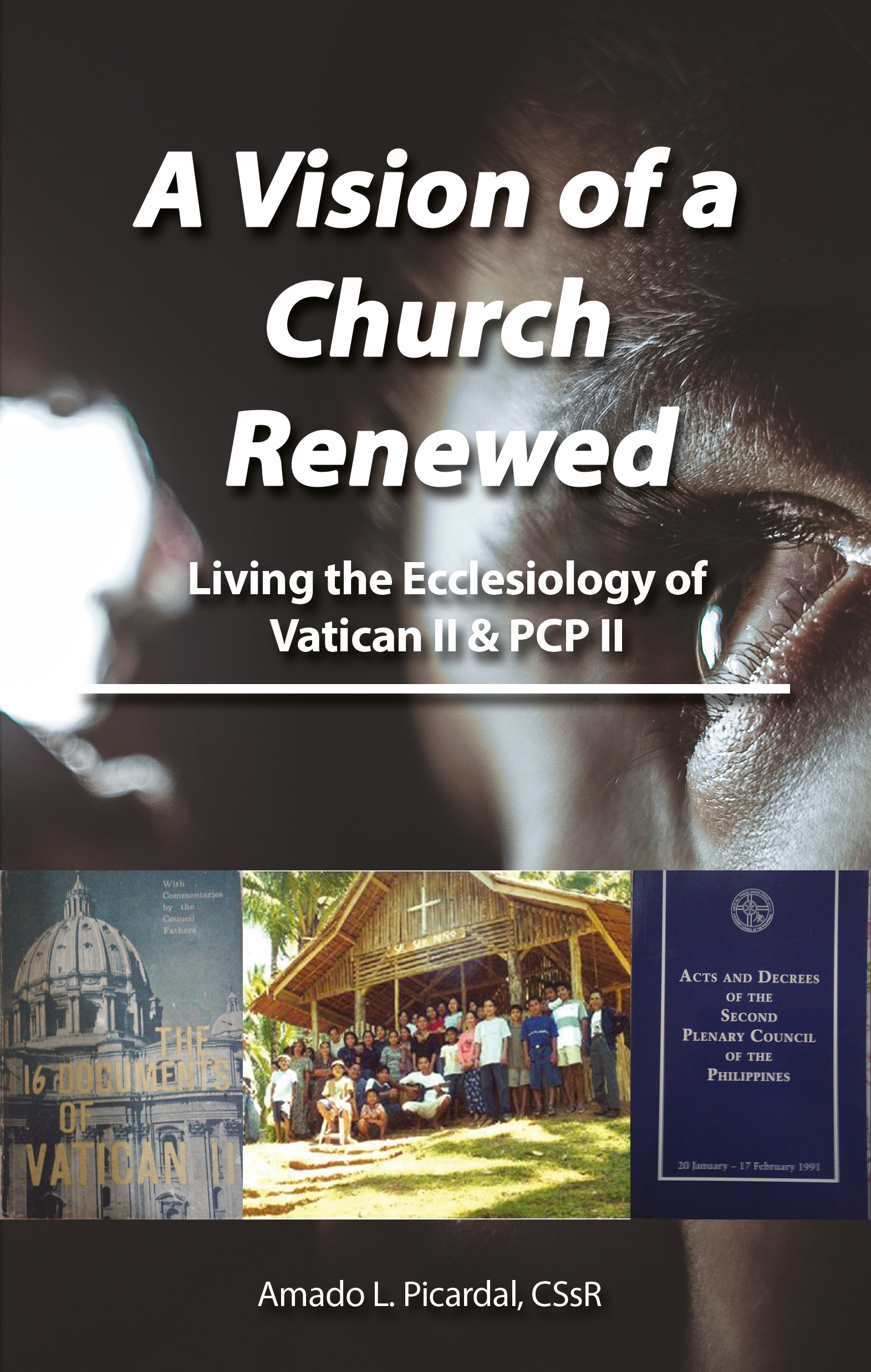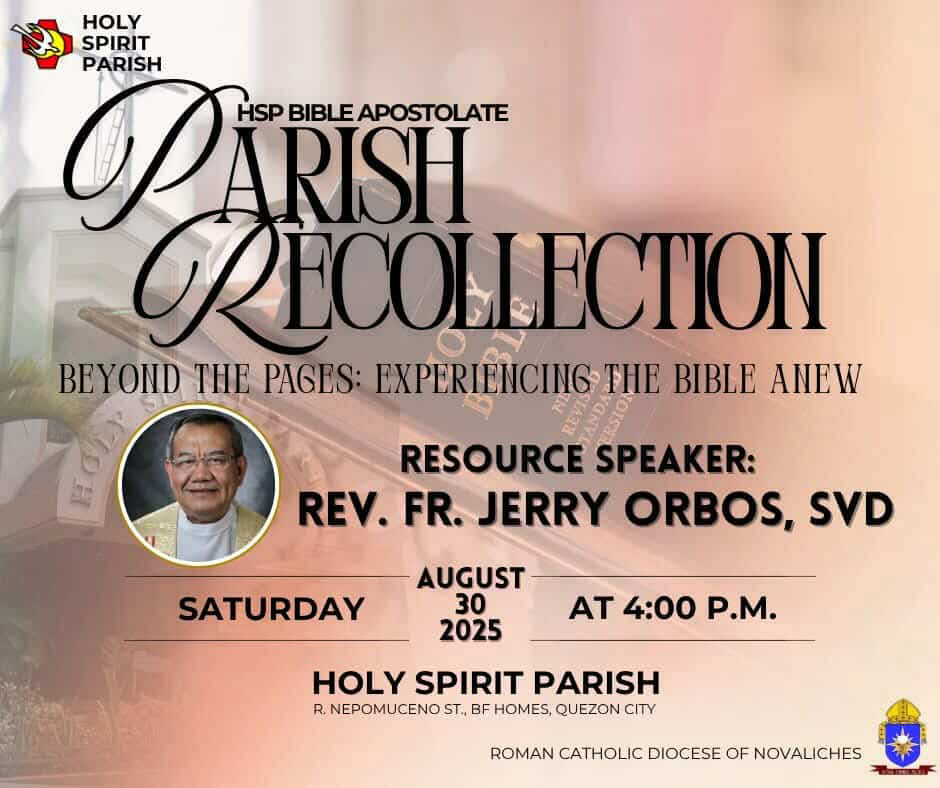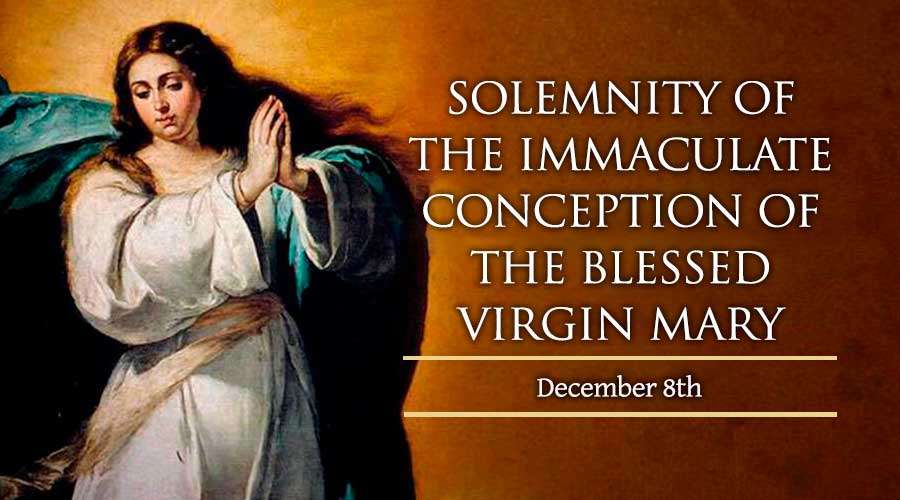
by Karl Gaspar, CSsR
A VISION OF A CHURCH RENEWED (LIVING THE ECCLESIOLOGY OF VATICAN II AND PCP II) By Fr. Amado L. Picardal, CSsR – published by Claretian Communications Foundation, Inc., 2022
CONTINUING CHALLENGE TO RENEW THE CHURCH
Amidst the disturbing news that the highly esteemed Holy Father, Pope Francis’s health is deteriorating (most of his photos show him seated in a wheelchair and needs to be lifted up), there are all kinds of speculations about the consequences if he decides to resign.
First, there is the question of who can then be elected in the papal conclave, where cardinals all over the world gather in Rome to elect his successor. Luis Cardinal Tagle has been named as one possibility, along with a few others. Only time will tell, however, who the next Pope will be and if he will be continuing the reforms that Pope Francis has earnestly pushed despite objections from the Roman Curia. Or following – the usual pendulum that takes place with social institutions – the movement will return to the conservative mindset of an institutional Church characterized by the likes of St. John Paul II.
Since he got elected on March 13, 2013 – almost a decade ago – replacing Pope Benedict XVI, who resigned from the papacy, Pope Francis has opened the windows of the Vatican so that the Church can co-exist with the complexities of the post-modern world. He has issued some of the most important pastoral documents to come out of the Vatican, from the Apostolic Exhortation of Evangelii Gaudium to Laudato Si! to Fratelli Tutti.
There was even a rumor earlier that he was set to convene Vatican III in the hope that all the recommendations that Vatican II approved could be more seriously pursued by Local Churches, especially those who had remained indifferent to the concerns of Vatican II. As it proved too controversial to organize, Pope Francis shifted two years ago to convening a Synod on Synodality.
To facilitate the active participation of the laity – including those who are not practicing Catholics or even those who may feel completely alienated from the institutional Church – all Local Churches (BECs, parishes, and dioceses) across the globe were tasked to hold local consultations on the theme “Journey with the Church in the Contemporary Times.” This Synodality asks the question – what does God expect of the Church in the 21st century? A ten-minute report was to be submitted by BECS/parishes to their Diocese, and all dioceses worldwide are to submit their 10-minute summary report to the Vatican.
October 2021 to April 2022 was the allotted period for the Diocesan Phase. A second continental phase began in September 2022 and until March 2023. And finally, the third or the universal phase will begin with the XVI Ordinary General Assembly of the Synod of Bishops on the theme “For the Synodal Church: Communion, Participation, and Mission,” to be held in the Vatican in October 2023. An Apostolic Exhortation will then be issued by the Pope. The question remains: can Pope Francis hold on to his Chair until then to preside over this Assembly?
Meanwhile, organizers for the 17th Mindanao Sulu Pastoral Conference (MSPC) on the theme – THE GIFT OF FAITH AND NEW EVANGELIZATION AS A SYNODAL CHURCH – are gearing up for the Conference to be held from November 7 to 11, 2022 at the Chali Beach Resort & Conference Center, Cugman, Cagayan de Oro. Once more, the delegates will again assess where the Local Churches are in their quest for continuous renewal. Once more, the focus will be on what is happening at the level of the grassroots Church, namely the hundreds of BECs spread across Mindanao.
Now comes Fr. Amado L. Picardal’s continuing effort to provide the Philippine Church with a textbook on understanding its ecclesiology in these contemporary times. As the author writes in the book’s Prologue: “Ecclesiology is the discipline that systematically reflects the self-understanding of the Church in the light of faith. It seeks to answer the question about the Church’s identity, nature, and mission. It is a theological reflection on the mystery of the Church, which is distinct from Church history. While it is possible to study the history of the Church even without faith, Ecclesiology requires a faith perspective. It is the work of a believer for the sake of the community of believers.”
The author contends that this book does not promote new and radical ideas about the Church. He intended to “to explicate the vision of a renewed Church espoused in Vatican II and received by PCP II and explore its meaning and implication in the Philippine context.” The writing of this book goes back to when the author was doing his dissertation – An Ecclesiological Perspective – with the Pontifical Gregorian University in Rome way back in 1995. Most of what appears in this book are the product of his research and the updating and revisions he has made through the years.
There are 11 Chapters in this book, covering 377 pages. Before presenting his thoughts on BECs again, the first chapters involve an explanation of the ecclesiological models of the Church (Church as Communion, Institution, Herald, Sacrament, and Servant); the Church as People of God (Prophetic, Priestly, and Kingly People) and The Church of the Poor. After the Chapter on the BECs, the remaining Chapters include an explanation of the Family as a Domestic Church, the Church in Dialogue (with the world, Inter-religious Dialogue, with the poor), and a Renewed Clearly in a Renewed Church.
Across the pages of this book are quotes from the Decrees of Vatican II, various apostolic exhortations issued by the Popes, and CBCP statements. At the end of each Chapter, there is a long list of citations, a testament to the author’s persistence in doing rigorous research before writing the manuscript. Concrete examples of pastoral practices cover all corners of Mindanao and the rest of the world.
There are, however, Church workers – especially in Mindanao who were witnesses to the glory days of the Mindanao-Sulu Conference – who could not help but compare how the Local Churches and BECs were in the 1970s-80s compared to how they function during the contemporary period. Then most of the bishops, clergy, and religious – and a growing number of lay leaders – collaborated to make their BECS kingly and prophetic. As a result, the military red-tagged some lay leaders, priests, and religious. Consequently, many of them were arrested, imprisoned, and even killed.
Today one can hardly hear of any single story of a BEC or a lay leader being harassed by the military in the same manner that indigenous communities opposing mining and other development projects have been subjected to. What is this indicating? That the State has become more tolerant of a militant Church, or the fact is that the militant Church has disappeared to give way to a conservative model interested only in providing spiritual care to the faithful? Gone are the days when BECs were at the forefront of struggles for justice, peace, and creation’s integrity!
Towards the end of this book, the author contends, “The pre-Vatican II model of the Church appears to still persist in the mind of many… There is still a gap between the vision and reality. There are still some dioceses and parishes where Vatican II and PCP II’s vision of the renewed Church has not yet been fully implemented. Vatican II seems to be ancient history for the new generation, and the documents remain unread, gathering dust in the libraries.”
The book offers some suggestions for pursuing the project of a renewed Church. Still, it will require a pro-active commitment on the part of all – from bishops down to the BEC leaders – to break the impasse that seems to make the members of the Church complacent and apathetic to the social and ecological issues that are only worsening. The economy is in shambles, and poverty levels are again increasing. Indigenous communities remain at the periphery with little assistance from the State.
While there is peace in Mindanao for the moment, conflicts still cause the eruption of violence. Corruption remains well entrenched in the State agencies demanding good governance practices. Our place on the planet remains precarious as mining, logging, expansion of plantations, and inefficient waste management combine to worsen climate change.
For the BECs to once more become fully alive and contribute to the transformation of our society, we need to double our efforts at renewing the Church. Otherwise, the future may not be too bright for Roman Catholicism in this country if and when the general population thinks of the Church as irrelevant in responding to the challenges of a complex society today and the days still to come!









